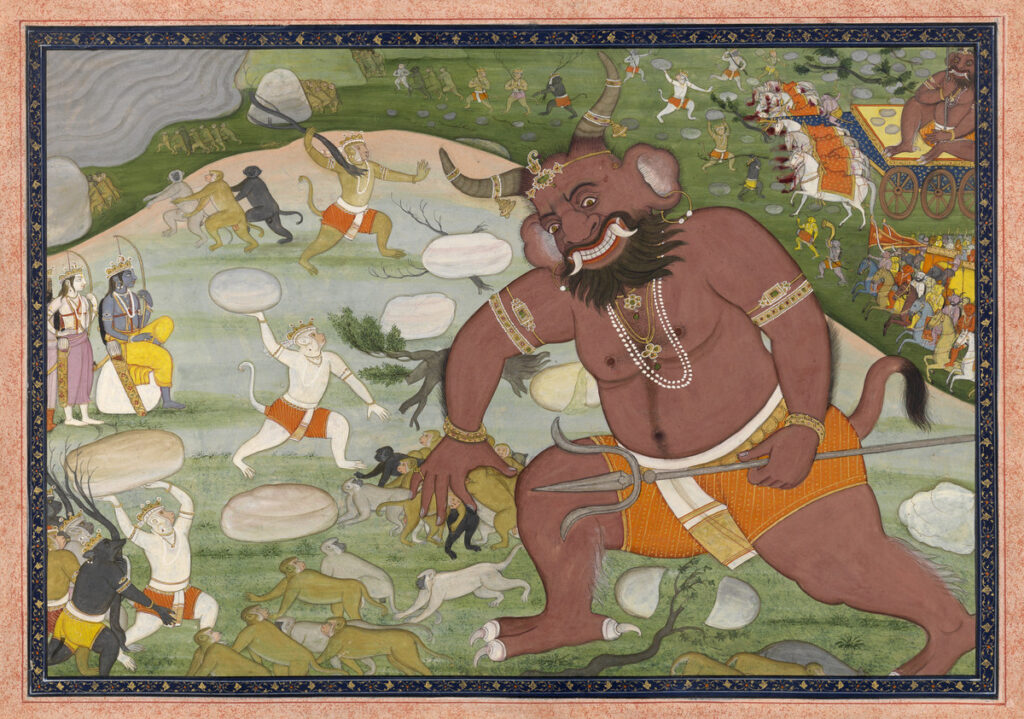Not On View
Unknown
Indian
Place made: Asia; India; Himachal Pradesh; Kangra
Battle between Hanuman and Kumbhakarna, from the Ramayana, ca. 1810-1820 (Mughal period, 1526-1858)
Mat: 16 in x 20 in; 40.6 cm x 50.8 cm; Sheet: 10 in x 13 13/16 in; 25.4 cm x 35.1 cm
Purchase with the John Martyn Warbeke Art Fund
MH 1981.6

 GIVE
GIVE